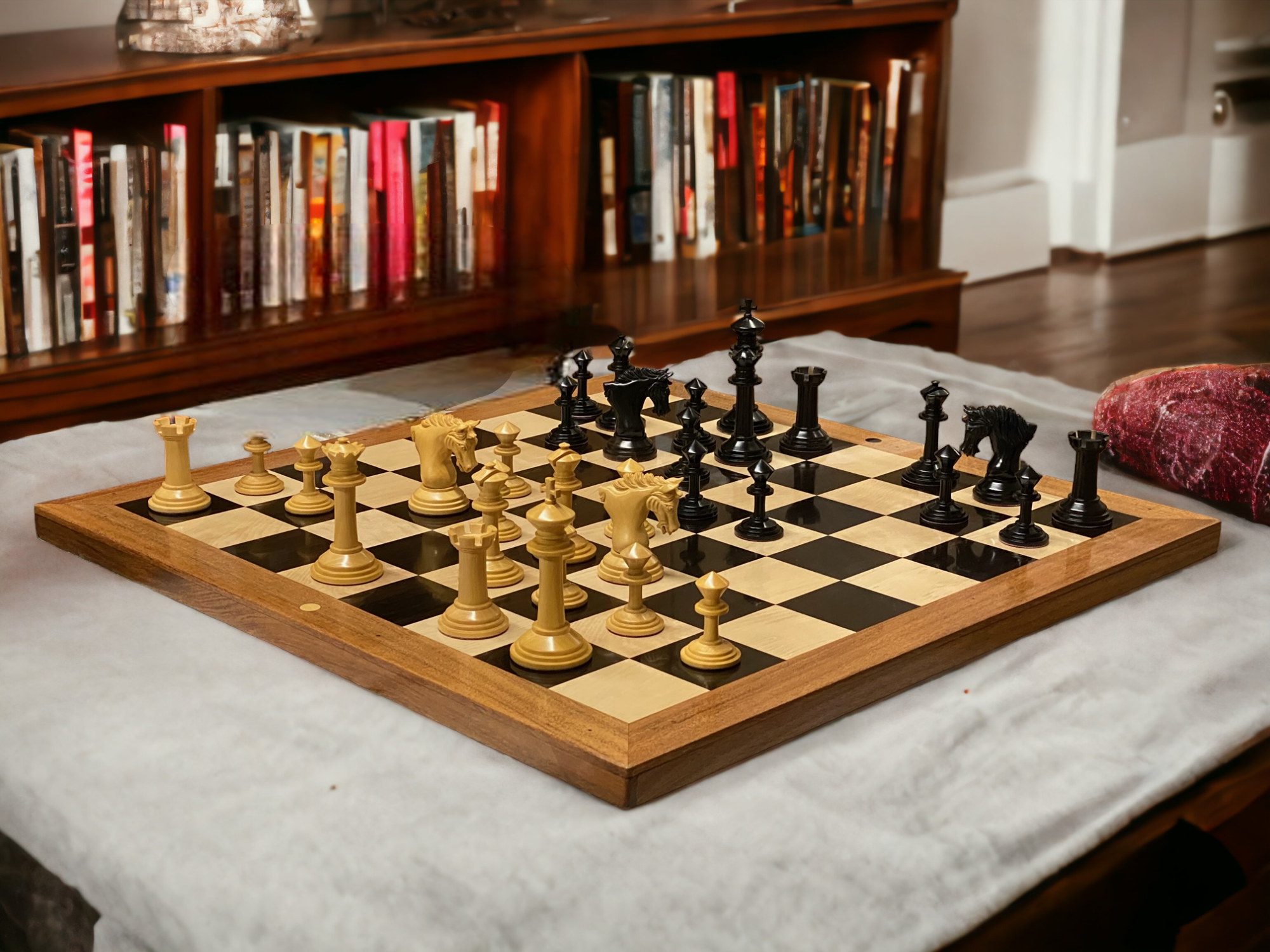The Timeless Allure of Wooden Chess Boards:
In the world of chess, where strategy meets intellect, the choice of chess board plays a pivotal role in shaping the overall experience. Among the myriad materials available, the wooden chess board stands as a classic, embodying tradition, craftsmanship, and a timeless aesthetic. In this comprehensive exploration, we delve into the allure of wooden chess boards, exploring their history, craftsmanship, types, and the unique charm they bring to the game.
Historical Significance:
Delving into the historical roots of chess unveils the profound significance of wooden chess boards, echoing the game's evolution across centuries and civilizations. In the early stages of the game, chess boards were fashioned from various materials. However, it was the versatility, workability, and inherent beauty of wood that propelled it to prominence as the preferred medium.
As chess journeyed through diverse cultures and civilizations, wooden chess boards evolved in tandem. The craftsmanship associated with these boards became a reflection of cultural nuances and artistic expressions. The transition from makeshift boards to finely crafted wooden surfaces marked a pivotal moment, elevating the game to an art form.
Transforming Wooden Chess Boards in the 19th Century
A defining chapter in the historical narrative of wooden chess boards unfolded with the advent of the Staunton design in the mid-19th century. Named after Howard Staunton, a prominent chess player of his era, this iconic design introduced distinctive chess piece styles and set a new standard for tournament play. The wooden chess board seamlessly integrated into the Staunton design, becoming an inseparable part of the chess landscape.
The Staunton design not only solidified the association of wooden chess boards with the game but also brought a level of uniformity and sophistication to chess sets. Its influence extended beyond the board, shaping the aesthetics and standards that continue to define the game today. The intricate relationship between the Staunton design and wooden chess boards underscores the enduring historical bond between craftsmanship, tradition, and the game of chess.
In the world of chess, the wooden chess board stands as a timeless and cherished element. Its historical roots, craftsmanship, aesthetic appeal, tactile experience, and cultural significance contribute to its enduring popularity. Whether crafted with traditional Staunton designs, intricate inlays, or innovative magnetic features, wooden chess boards continue to captivate players and collectors alike. As chess enthusiasts gather around these boards, each move becomes a celebration of tradition, intellect, and the enduring beauty of wood. The wooden chess board is not just a playing surface; it is a testament to the enduring legacy of a game that has transcended centuries and cultures, leaving an indelible mark on the world of strategy and intellectual pursuits.
Craftsmanship and Types:
Wooden chess boards owe much of their charm to the artistry and craftsmanship invested in their creation. Craftsmen use a variety of wood types, each with its unique characteristics, to craft these boards. Common wood choices include walnut, maple, rosewood, ebony, and mahogany, each offering a distinct color, grain pattern, and texture.
The craftsmanship extends beyond the choice of wood to intricate details such as inlay work, carving, and finishing. Inlay work, where different wood types are skillfully combined to create patterns or designs on the board, adds a touch of elegance. Carved borders and edges enhance the aesthetic appeal, while meticulous finishing ensures a smooth surface conducive to precise moves.
Wooden chess boards come in various styles and sizes, catering to different preferences and needs. Magnetic wooden chess boards, designed with embedded magnets in the pieces and board, allow for portable and stable gameplay. Folding wooden chess boards, with a hinged design, provide convenience for storage and transport. Each style adds a layer of versatility while maintaining the inherent beauty of wood.
Aesthetic Appeal:
The aesthetic allure of wooden chess boards is undeniable. The natural beauty of the wood, with its warm tones and rich grain patterns, adds a touch of sophistication to the game. Whether it's the light hues of maple, the dark richness of walnut, or the luxurious ebony, each wood type contributes to the visual appeal of the chess board.
Wooden chess boards also age gracefully, developing a patina over time that tells the story of countless games played. This aging process adds character and uniqueness to each board, making it a cherished possession for enthusiasts. The tactile experience of moving wooden chess pieces across a finely crafted wooden board enhances the sensory pleasure of the game.
Tactile Experience and Durability:
One of the distinct advantages of wooden chess boards is the tactile experience they offer. The smooth surface of a well-crafted wooden board provides a satisfying feel for players as they execute moves. The tactile feedback enhances the connection between the player and the game, adding an immersive dimension to the chess experience.
In terms of durability, wooden chess boards, when properly cared for, can withstand the test of time. Quality wood, combined with expert craftsmanship, results in a sturdy and long-lasting game surface. Regular maintenance, such as cleaning and waxing, helps preserve the board's integrity and ensures it remains a reliable companion for countless games.
Cultural and Symbolic Significance:
Wooden chess boards have transcended their utilitarian purpose to become symbols of cultural richness and intellectual pursuits. From the coffeehouses of Europe where chess was played on wooden boards for centuries to the intricately carved sets in Asian cultures, wooden chess boards have left an indelible mark on the cultural landscape.
In addition to cultural significance, wooden chess boards hold symbolic value. They represent tradition, strategic thinking, and a connection to the past. The act of setting up a wooden chess board and engaging in a game is a ritual that spans generations, fostering a sense of continuity and shared experience.
Environmental Considerations:
As sustainability becomes an increasingly important consideration, wooden chess boards made from responsibly sourced wood offer an eco-friendly choice. Many manufacturers prioritize using wood from certified sustainable forests, ensuring that the production of wooden chess boards has minimal impact on the environment.



